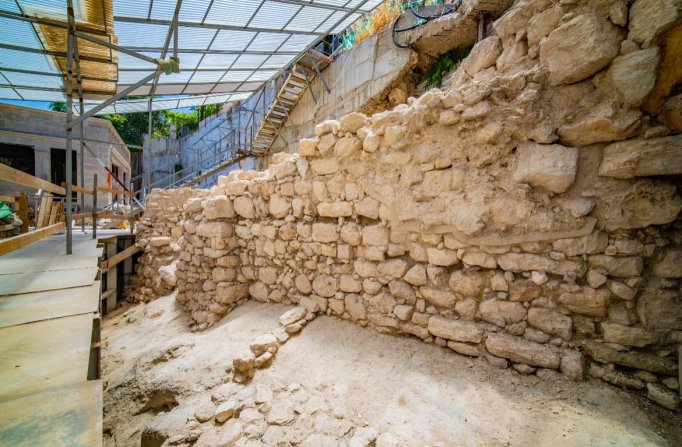City Wall-
Archaeologists have uncovered a missing section of Jerusalem’s original Iron Age fortifications that were built at least 2,700 years ago.
The following written content by Jesse Holth

Archaeologists have uncovered a missing section of Jerusalem’s original Iron Age fortifications that were built at least 2,700 years ago. Most of the wall would have been destroyed during a Babylonian invasion in 586 B.C.E., according to the Israel Antiquities Authority (IAA), which announced the discovery this week.
A wall segment on the eastern slope of the City of David National Park, dating to the First Temple period (roughly the 8th century B.C.E.), was discovered last week in an excavation led by Dr. Joe Uziel and Ortaf Kalaf of the IAA and Dr. Filip Vukosavović of the Ancient Jerusalem Research Center.

The wall fragment is one of the only remains to survive from a deadly military campaign by the Babylonian king Nebuchadnezzar, who sacked the city and destroyed the famous Temple Mount.
In a video published by the IAA explaining the find, Dr. Uziel said, “The Babylonians arrived here in 586 B.C.E. and destroyed the city of Jerusalem and the First Temple,” adding that “they did not destroy this segment of the wall, which remains standing until today, waiting for us archaeologists to come and expose it.”
The section links two previously discovered segments, which provides further proof that Jerusalem was fully walled before the Babylonian conquest. “Now we can reconstruct 200 meters of the city wall that surrounded the eastern slopes of the City of David and Jerusalem,” Dr. Vukosavović said in the video. The team also uncovered the remains of a partial building just inside the wall. Read more from Art News.





